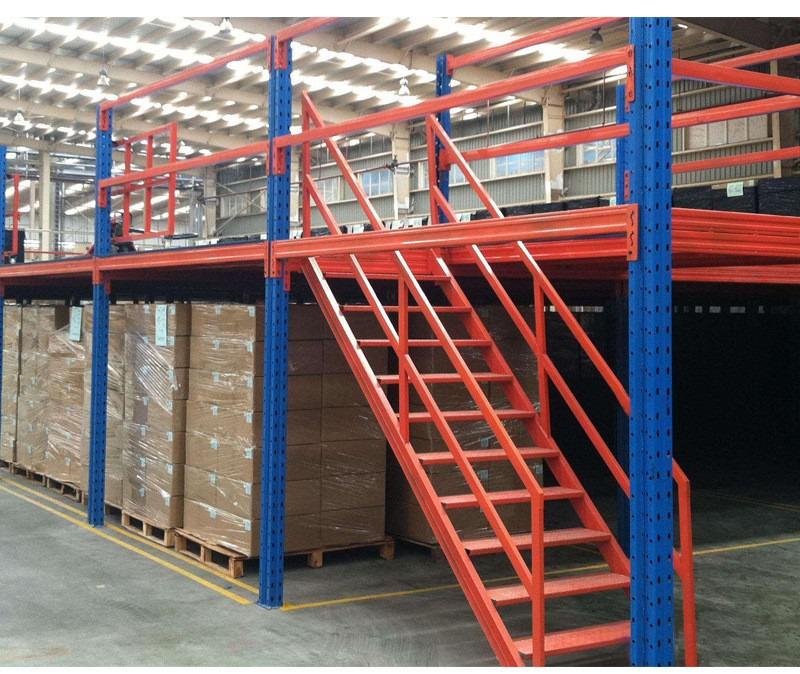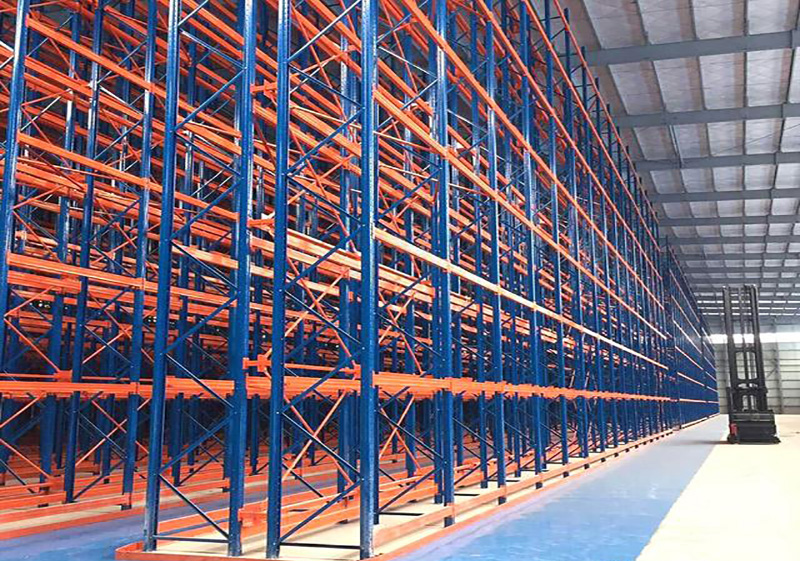In the dynamic world of logistics and inventory management, maximizing space, ensuring safety, and optimizing workflow are non-negotiable. At the heart of achieving these goals lies a seemingly simple yet profoundly critical component: warehousing racks. Far more than just metal frameworks, warehousing racks are sophisticated storage solutions engineered to transform chaotic storage spaces into models of efficiency. This comprehensive guide delves deep into the world of warehousing racks, exploring their essential types, structural nuances, significant benefits, critical selection factors, and vital safety considerations, empowering you to make informed decisions for your storage needs.

1. Understanding the Core Types of Warehousing Racks
The diversity of stored goods necessitates a range of warehousing racks designs. Selecting the right type is foundational to operational efficiency.
Selective Pallet Racks: The undisputed workhorse of the industry. These versatile warehousing racks feature upright frames connected by load beams, creating accessible aisles on all sides. Each pallet is individually accessible (FIFO or LIFO possible), making them ideal for warehouses with a vast SKU count and high inventory turnover. Adjustable beam levels accommodate various pallet sizes. Variations include roll-formed (lighter duty) and structural bolted (heavy-duty) frames.
Drive-In/Drive-Through Racks: Designed for high-density storage of homogeneous products. Warehousing racks in this configuration eliminate access aisles between rows. Forklifts drive directly into the rack structure (Drive-In, typically LIFO) or through it (Drive-Thru, FIFO). Ideal for cold storage, bulk storage of beverages, or items with low SKU counts but high volume. Sacrifices some selectivity for maximum space utilization.
Push Back Racks: Offering a balance between selectivity and density. Pallets are stored on wheeled carts nested on inclined rails within the warehousing racks. When a new pallet is loaded, it pushes the existing pallets back. Retrieval works in reverse (LIFO). Provides deeper storage than selective racks (typically 2-6 pallets deep) while still allowing reasonable access.
Pallet Flow Racks: Utilize gravity for high-density, high-throughput operations (FIFO). Warehousing racks are built on a slight incline. Pallets are loaded at the higher end and flow on wheeled rollers or skate wheels to the lower end for picking. Ideal for perishable goods, time-sensitive materials, or operations requiring strict FIFO rotation. Requires careful load uniformity.
Cantilever Racks: Specialized warehousing racks designed for long, bulky, or awkwardly shaped items (lumber, pipes, furniture, carpet rolls). Feature sturdy vertical columns with horizontal arms extending outwards. Arms are adjustable to accommodate different lengths. Provide unobstructed access along the entire length of the stored item.
Mobile Aisle Racks (Mobile Shelving): Dramatically increase storage density by placing entire rows of warehousing racks on motorized bases moving along tracks. Only one aisle is open at a time, activated as needed. Perfect for archives, libraries, or warehouses with vast inventory but limited floor space needing high-density storage for lower-turnover items. Requires a solid floor.
Mezzanine Systems with Integrated Racking: Effectively create a second level within the warehouse. Warehousing racks can be integrated underneath the mezzanine deck or on the deck itself, significantly multiplying usable storage space without expanding the building footprint. Ideal for consolidating operations or adding storage in facilities with high ceilings.
2. Anatomy and Structural Features of Warehousing Racks
Understanding the components and engineering principles behind warehousing racks is crucial for safety and performance.
Upright Frames: The vertical backbone. Typically constructed from roll-formed or structural steel. Feature punch holes for beam level adjustment. Critical dimensions include height, depth, and gauge/thickness of steel. Baseplates anchor the frames to the floor.
Load Beams: Horizontal members that span between upright frames and directly support the pallets. Available in various lengths and capacities. Feature hooks or connectors that lock into the upright punch holes. Beam deflection under load is a key engineering consideration.
Wire Decking or Pallet Supports: Often used on load beams to provide a stable surface for pallets, preventing them from falling through and enhancing safety. Wire mesh decking is common, allowing for fire sprinkler compliance and debris fall-through.
Row Spacers and Braces: Diagonal or horizontal braces connecting upright frames within a row and between rows, providing critical lateral stability to the entire warehousing racks structure. Row spacers maintain consistent aisle width.
Frame Protection: Column guards, rack protectors, and post protectors are essential accessories bolted to the base of uprights to absorb impacts from forklifts, preventing structural damage and maintaining integrity.
Load Capacity Ratings: Every component (uprights, beams, decks) has a specific load rating. The overall system capacity is determined by the lowest rated component in the loaded bay. Exceeding these ratings is extremely dangerous. Ratings are based on uniform, evenly distributed loads.

3. The Tangible Benefits of Implementing Warehousing Racks
Investing in the right warehousing racks system yields substantial returns across multiple dimensions:
Maximized Vertical Space & Floor Utilization: The primary advantage. By leveraging unused cubic airspace, warehousing racks dramatically increase storage capacity without expanding the building footprint, leading to significant savings on real estate costs.
Enhanced Organization & Inventory Control: Systems provide designated locations for every SKU, making inventory easier to track, count, and manage. This reduces lost stock, improves accuracy, and streamlines operations like cycle counting.
Improved Accessibility & Picking Efficiency: Well-designed warehousing racks layouts (especially selective systems) minimize travel time for forklifts and order pickers. Faster access translates directly to higher throughput and reduced labor costs per pick.
Increased Safety: Properly installed and maintained warehousing racks prevent pallets from collapsing or falling. Decking provides secure footing. Organized storage reduces trip hazards and clutter, creating a safer work environment. Structural integrity prevents catastrophic failures.
Product Protection: Keeping goods off the floor protects them from moisture, dirt, and potential damage from ground-level activities. Appropriate rack configurations (like flow racks for FIFO) also ensure proper stock rotation, reducing spoilage.
Scalability & Flexibility: Most warehousing racks systems are modular. You can easily reconfigure layouts, add more bays, increase height (if clearances allow), or relocate the system as business needs evolve. Adjustable beams accommodate changing pallet sizes.
Operational Cost Savings: Combined benefits of space savings, labor efficiency, reduced product damage, lower insurance premiums (due to improved safety), and optimized inventory lead to significant long-term operational cost reductions.
4. Critical Factors for Selecting the Right Warehousing Racks
Choosing the optimal warehousing racks system is not a one-size-fits-all decision. Careful analysis is required:
Inventory Characteristics: What are you storing? Analyze pallet size, weight, dimensions, fragility, and whether items are homogeneous or diverse. Consider FIFO vs. LIFO requirements.
Warehouse Infrastructure: Measure clear ceiling height, floor conditions (levelness, load-bearing capacity), column locations, door positions, and fire sprinkler clearances. These dictate maximum rack heights and layout possibilities.
Material Handling Equipment (MHE): The type (forklift, reach truck, order picker), lift height, and turning radius of your MHE determine required aisle widths and impact rack selection (e.g., narrow aisle racks require specialized equipment).
Throughput Requirements: High-volume operations with frequent access favor selective racks. Slower-moving, homogeneous inventory might be better suited for drive-in or push-back warehousing racks.
Budget: Costs vary significantly based on type (selective vs. automated), material (roll-formed vs. structural), height, capacity, and accessories. Consider total cost of ownership (purchase, installation, maintenance) versus the operational savings.
Future Growth: Select a system that offers flexibility for expansion or reconfiguration. Consider potential changes in inventory profile or business volume.
Safety & Compliance: Ensure the chosen system can be installed to meet all local building codes and OSHA regulations regarding load ratings, anchoring, and clearances. Professional design and installation are paramount.
5. Safety, Maintenance, and Best Practices for Warehousing Racks
Warehousing racks are robust, but they are not invincible. Safety is paramount and requires ongoing diligence:
Professional Design & Installation: Never cut corners. Engage qualified rack design engineers and certified installers. They ensure the system is designed for your specific loads and installed correctly, anchored securely to the floor.
Strict Adherence to Load Ratings: NEVER EXCEED posted load capacities. This includes both the maximum weight per pallet position and the overall load per bay. Unevenly distributed loads can be just as dangerous as overweight ones. Train staff rigorously on this.
Regular Inspections: Implement a comprehensive inspection program:
Employee Visual Checks: Encourage operators to report any visible damage immediately.
Formally Scheduled Inspections: Conducted by trained personnel (quarterly/semi-annually).
Professional Engineer Inspections: Annual or bi-annual inspections by a qualified rack safety engineer are highly recommended, especially after impacts or seismic events.
Impact Protection & Prevention: Mandatory use of column guards, rack protectors, and post protectors. Implement driver training programs focused on safe maneuvering near warehousing racks. Consider aisle barriers in high-traffic areas.
Prompt Damage Repair: Any bent, cracked, or otherwise damaged component (upright, beam, brace, connector) must be immediately reported, unloaded, and replaced with manufacturer-approved parts by qualified personnel. Do not attempt makeshift repairs.
Proper Loading & Unloading: Ensure pallets are stable, undamaged, and squarely placed on the beams or decking. Avoid overhang. Use the correct MHE attachments safely.
Clear Aisles & Signage: Maintain clear aisle widths as designed. Post load capacity signs visibly on every bay. Ensure good lighting throughout the racking area.
Anchoring Integrity: Periodically check anchor bolts for tightness, especially in seismic zones or after impacts. Floor condition is critical for anchorage.
Warehousing racks are far more than passive storage structures; they are dynamic, engineered solutions that form the strategic backbone of efficient warehouse operations. By understanding the diverse types available, their structural principles, the multitude of benefits they offer, and the critical factors involved in selection and safety, businesses can unlock significant gains in space utilization, productivity, inventory accuracy, and workplace safety. Investing in the right warehousing racks system, coupled with rigorous adherence to safety protocols and maintenance schedules, is not just an operational decision, but a strategic investment in the foundation of a streamlined, cost-effective, and resilient supply chain. Careful planning and professional implementation ensure your warehousing racks become a powerful asset driving your logistics success.







